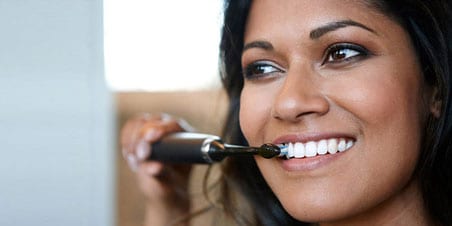
Periodontal disease treatment, causes & prevention

We all know that regular trips to the dentist and frequent toothbrushing are important for our oral hygiene. But just as your dentist will remove plaque and tartar build-up during your regular cleaning, you too can take steps to ensure tartar prevention between appointments. Read on to discover how to remove plaque on teeth at home, and get prevention tips and answers to all your burning questions about plaque and tartar. If you just want a basic overview – what is tartar on teeth? – we’ve got you covered there as well.
Understanding how to remove plaque starts with understanding what exactly plaque on teeth is:
Plaque on teeth – and subsequently tartar if you don’t remove plaque quickly – contains bacteria. Both plaque and tartar need swift and regular removal to keep your teeth and gums healthy in the long run.
If the plaque doesn’t get removed, it can lead to not only damaged enamel and tooth decay, but also the development of gum disease.2
Here is our simple three-step guide on how to remove plaque at home:

It’s important you know what tartar is before we show you how to remove tartar. This is also a key first step in tartar prevention. So, what is tartar on teeth, and how does tartar form?
While you can remove plaque easily at home by yourself, choosing to remove tartar at home is not recommended. If you remove tartar yourself, you could damage your teeth and cause injury to yourself. Even if there are pieces of tartar breaking off the back of your teeth already, it’s best not to try to chip off the rest of it. Although tartar removal can be a little bit uncomfortable, you’ll enjoy your sparkling clean and healthy teeth after it’s done.
Instead, here’s how to remove tartar:
The most obvious way to prevent the build-up of tartar is with thorough oral hygiene. That being said, there are a few additional things that you can do to prevent plaque and the need to remove tartar: With just a few simple steps we’ve shown you how quick and easy it is to achieve good dental health, remove tartar and prevent plaque on your teeth. Once you’ve made daily oral care a part of your routine, brushing and rinsing will soon second nature. Using our tips as your guide, you will be rewarded with a sparkling, healthy smile.